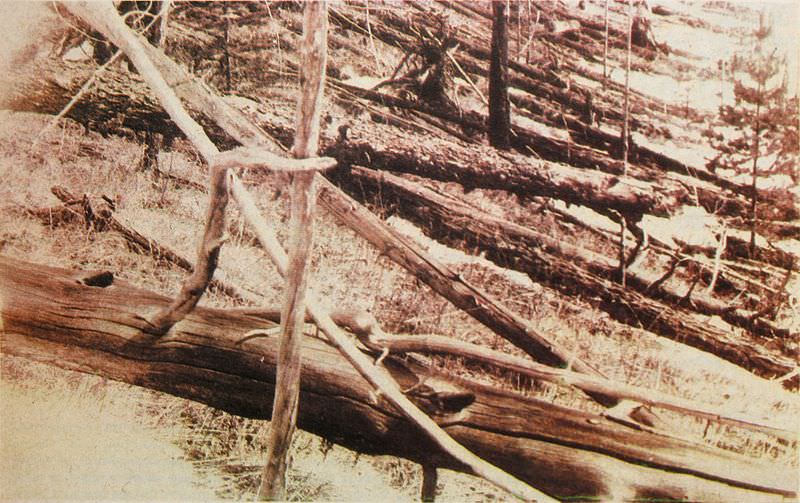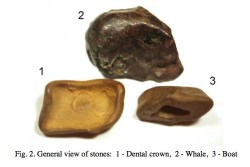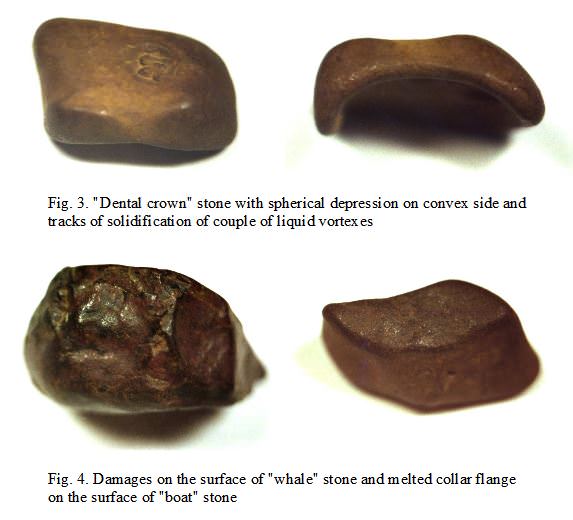On a cool Summer morning in 1908, a fireball appeared over Northern Siberia. Eyewitnesses described a column of blue light that moved across the sky, followed by a tremendous explosion. The explosion leveled trees across more than 2,000 square kilometers. The explosion is consistent with a large meteor strike, but to this day no evidence of a crater has been found. Now known as the Tunguska Event, its cause remains a mystery to this day.
Continue reading “The Tunguska Explosion Could Have Been Caused By An Asteroid That Still Orbits The Sun”Claims of Tunguska Meteorite Fragments “Ridiculous,” Scientist Says

Last week, Russian researcher Andrei Zlobin announced that stony fragments collected from a riverbed in 1988 are “probably Tunguska meteorites,” and are likely the remains of whatever cosmic object — thought to be either a comet or an asteroid — entered Earth’s atmosphere over the boggy region of Siberia on June 30, 1908, detonating with an estimated force of 5 megatons and leveling over 800 square miles of forest.
So far, definitive pieces of the original object have yet to be found despite numerous expeditions to the remote impact site. In a paper submitted on April 29, Zlobin cites the melted appearance of several stones found at the bottom of the Khushmo River as a good argument to “confirm the discovery” of Tunguska meteorite fragments.
According to Natalya Artemyeva of the Russian Academy of Sciences’ Geosphere Dynamics Institute, however, Zlobin’s claim is “ridiculous.”
In an article published May 4 on RIA Novosti, Artemyeva stated “There are many meteorites on Earth. For 100 plus years since the fall of the Tunguska space body, the weight of meteoric dust and small meteorites that have fallen out in that region has exceeded the mass of Tunguska.”

An estimated 100 tons of space debris enters Earth’s atmosphere on a daily basis.
Although Zlobin admits in his submitted paper that “strict confirmation of discovered melted stones as Tunguska meteorites is possible only after attentive chemical analysis of substance,” it seems that he is making rather bold claims based on appearance alone — especially considering the enigmatic and iconic nature of this particular impact event.
Read more: Tunguska Mystery Solved?
“It’s ridiculous,” Artemyeva said. “You can’t say by the appearance of a stone that it’s a meteorite. I don’t think there is ground for scientific discussion here.”
And, according to Artemyeva, even if the stones are found to be actual meteorites, connecting them to the 1908 event will still be a challenge.
Zlobin’s samples, which were in storage until 2008, are still awaiting full chemical analysis.
Read more on RIA Novosti here and on the MIT Technology Review here.
Possible Meteorite Fragments from 1908 Tunguska Explosion Found

The 1908 explosion over the Tunguska region in Siberia has always been an enigma. While the leading theories of what caused the mid-air explosion are that an asteroid or comet shattered in an airburst event, no reliable trace of such a body has ever been found. But a newly published paper reveals three different potential meteorite fragments found in the sandbars in a body of water in the area, the Khushmo River. While the fragments have all the earmarks of being meteorites from the event – which could potentially solve the 100-year old mystery — the only oddity is that the researcher actually found the fragments 25 years ago, and only recently has published his findings.
Like the recent Chelyabinsk airburst event, the Tunguska event likely also produced a shower of fragments from the exploding parent body, scientists have thought. But no convincing evidence has ever been found from the June 30, 1908 explosion that occurred over the Tunguska region. The explosion flattened trees in a 2,000 square kilometer area. Luckily, that region was largely uninhabited, but reportedly one person was killed and there were very few people that reported the explosion. Forensic-like research has determined the blast was 1,000 times more powerful than a nuclear bomb explosion, and it registered 5 on the Richter scale.
Previous expeditions to the region turned up empty as far as finding meteorites; however one expedition in 1939 by Russian mineralogist Leonid Kulik found a sample of melted glassy rock containing bubbles, which was considered evidence of an impact event. But the sample was somehow lost and has never undergone modern analysis.
The expedition in 1998 by Andrei Zlobin from the Russian Academy of Sciences was initially unsuccessful in finding meteorites or evidence of impacts. He made several drill holes in the peat bogs in the area and while he found evidence of the explosion, he didn’t find any meteorites. He then decided to look in the nearby river shoal.
Zlobin gathered about 100 samples of rocks that had features of potential meteorites, but further examination produced just three rocks with tell-tale features like melting and regmalypts – the , thumblike impressions found on the surface of meteorites which are caused by ablation as the hot rock falls through the atmosphere at high speed.
Zlobin writes that “After the expedition the author focused his efforts on experimental investigation of thermal processes and mathematical modeling of the Tunguska impact [Zlobin, 2007],” and he used tree ring evidence to estimate the temperatures from the event, and concluded that rocks already on the ground would not have been changed or melted from the blast, and therefore any rocks having evidence of melting should be from the impactor itself.
Zlobin says he has not yet carried out a detailed chemical analysis of the rocks, which would reveal their chemical and isotopic composition. But he does say the stony fragments do not rule out a comet since the nucleus could easily contain rock fragments. However, he has calculated the density of the impactor must have been about 0.6 grams per cubic centimeter, which is about the same as nucleus of Halley’s comet. Zlobin says that initially, the evidence seems “excellent confirmation of cometary origin of the Tunguska impact.”
While there is nothing definitive yet from Zlobin’s new paper – and there is the question of why he waited so long to conduct his study – his work provides hope for a better explanation of the Tunguska event as opposed to some rather off-the-wall ideas that have been proposed, such as a Tesla death-ray or an explosion of methane gas from the bogs.
The Technology Review blog writes that “clearly there is more work to be done here, particularly the chemical analysis perhaps with international cooperation and corroboration.”
Read Zlobin’s paper, Discovery of probably Tunguska meteorites at the bottom of Khushmo river’s shoal
Source: MIT Technology Review

